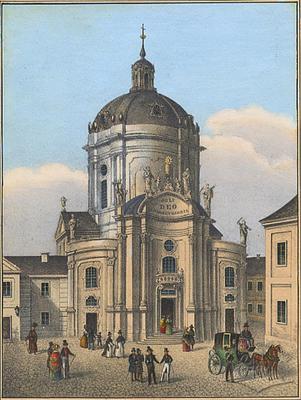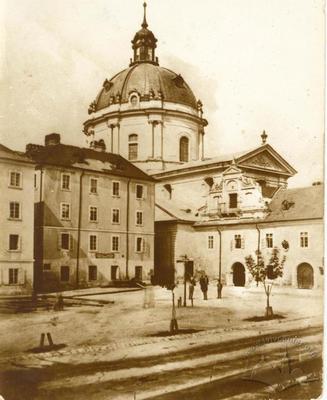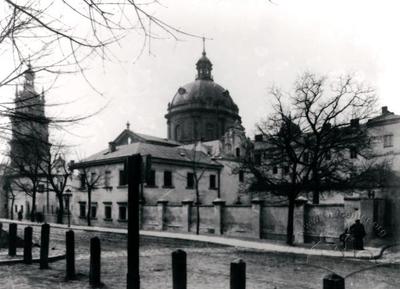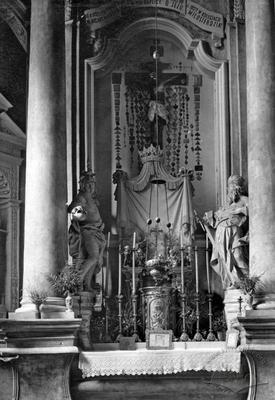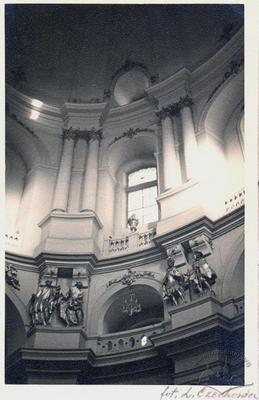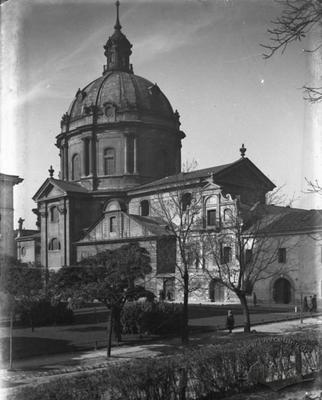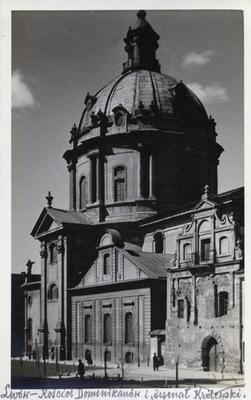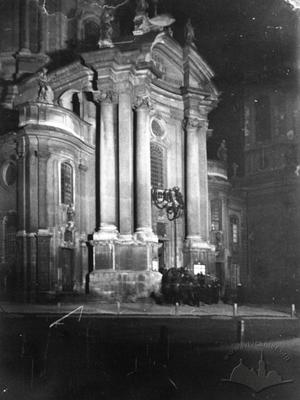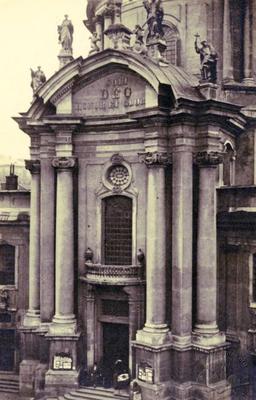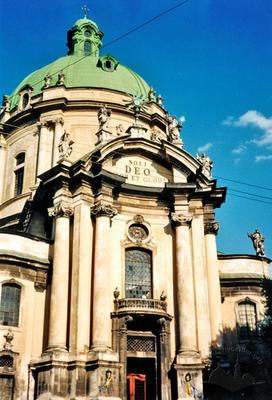Pl. Muzeina, 3 – church of the Blessed Eucharist (former Dominican convent church) ID: 188
The former Dominican Roman Catholic Church is the biggest Baroque church in Lviv. This massive monument of the Christian architecture has become the main component of the architectural complex dating to the fifteenth-nineteenth centuries including also the buildings of the monastery cells and the bell tower. The church was built from stone and brick over the course of 1749-1764 (the architects J. de Vitte, M. Urbanik and K. Muradowicz) on the site of a Gothic church of the fifteenth century, on the plot of land bordering the medieval Lviv on the west. In 1792-1798 the church was reconstructed (by the architect K. Fesinger). In 1905-1914 the interior restoration was completed. A square and a garden have been set up in front of the church. Under Socialism, the building housed the Museum of Atheism, later Museum of the History of Religion.
Architecture
The church’s plan is of an elongated cross shape with the central section in the form of an ellipse with a massive cupola over it and a rectangular altar section. The chapels are surrounding the central ellipsoid.
Church façade with an interrupted pediment is adorned with two columns on socle flanking the central entrance. The cupola drum is also decorated with columns. The windows are rectangular, in molding. The pediment is decorated with statues of saints (by the sculptor S. Fesinger).
The interior encompasses wooden sculptures set up under the cupola (the second half of the eighteenth century), altar plastics by M. Polejowski (1777) and stone and alabaster tomb stones of the sixteenth-seventeenth centuries from the old church. Special attention should be paid to the marble epitaph made by B. Torvaldsen (dating to 1816), the monument to A. Grotger (by the sculptor W. Gadomski, dating to 1880) and memorial plastics by A. Schimser (the first third of the nineteenth century).
The Lviv’s Dominican Church of the Lord’s Body is one of the best late Baroque architectural monuments in Europe.
Related buildings and spaces
People
Sources
- The entry was partly developed within the project "Galiciana", 2001-2002
Citation
Ihor Zhuk. "Pl. Muzeina, 3 – church of the Blessed Eucharist (former Dominican convent church)". Lviv Interactive (Center for Urban History 2013). URL: https://lia.lvivcenter.org/en/objects/dominican-church/
Urban Media Archive Materials
